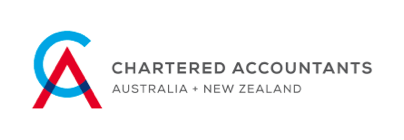Preparing early and thoroughly ensures a smooth, efficient audit process. Whether you’re a corporate entity, a not-for-profit, a school, a body corporate, an Australian financial services (AFS) licensee, or a professional services firm holding trust accounts, being audit-ready means more than ticking boxes—it’s an opportunity to strengthen your financial management, improve compliance, and streamline operations.
Allen Audit & Advisory Director, Richard Allen, explains step-by-step how Australian organisations can prepare for the audit process.
The audit process—what’s required?
In Australia, audits are required for organisations, from not-for-profits registered with the Australian Charities and Not-for-profits Commission (ACNC) and companies with public accountability to AFS licensees, strata entities, and organisations managing trust accounts. Some clubs, associations, and schools may also need audits depending on their governing body, funding arrangements, or state-based compliance frameworks.
The purpose of an audit is to provide independent assurance that your financial statements are accurate, complete, and compliant with applicable standards and regulations. Richard says an audit gives confidence to stakeholders, including regulators, funders, boards, and members, and can highlight areas for process improvement.
“The audit process typically begins with engagement and planning, followed by fieldwork—where auditors test transactions, review documentation, and assess internal controls—and concludes with reporting,” says Richard.
“Preparation ahead of time is key to ensuring the audit runs efficiently and cost-effectively.”
Preparing your financial statements
At the heart of audit readiness is the quality of your financial statements. Richard says these should be accurate, up-to-date, and supported by clear documentation, including reconciliations, ledgers, and source documents for material transactions.
“Well-organised financial statements make it easier for auditors to verify balances and reduce the time spent clarifying or correcting information,” says Richard.
“Ensure that all key reports are finalised, appropriately approved, and align with the applicable reporting framework, for example, Australian Accounting Standards, ACNC guidelines, or Australian Securities and Investments Commission (ASIC) obligations.”
Assessing your internal controls
Internal controls are the systems and processes you use to safeguard assets, ensure accurate reporting, and promote regulatory compliance. Strong internal controls reduce the risk of error or fraud and are a key focus.
Richard advises organisations to review existing control environments before the audit process begins. “This might include segregation of duties, approval hierarchies, secure access to financial systems, and oversight processes,” he says.
“Where gaps are identified, address them promptly and document any changes made. Your auditors will take these improvements into account.”
Reconciling accounts
Ensure all key accounts, including bank balances, receivables, payables, and trust accounts, are reconciled and supported by up-to-date documentation. This includes bank statements, ledgers, and transaction listings.
Richard says explanations of significant variances, whether from the year prior or the outlined budget, should also be prepared. “Providing clear, thoughtful variance commentary helps explain the “why” behind the numbers,” he says.
“These may be due to operational shifts, funding changes, or external factors, and help to avoid unnecessary delays in the process.”
Conducting an internal review
Richard recommends organisations perform a thorough internal review before submitting financials to the audit team. “Check that disclosures are complete, totals reconciled, and that formatting is clear and consistent,” he says.
“It’s also important to reflect on any issues raised in your previous audit and show how these have been addressed.
“It’s a way to quality control your draft, ensuring it’s as accurate as possible, and reduces the need for reworking during your audit.”
Audit engagement
An efficient audit is a collaborative one. “Make sure the right people from your team, such as your finance lead, accounts staff, or external bookkeepers, are available during the audit process to answer questions, locate records, or provide system access,” says Richard.
“Communicate with your team early so everyone knows the audit is taking place, what is expected, and how they can help,” he says.
“Stay proactive with your audit firm, too, by letting them know if there are operational changes, technical issues, or areas where you value more guidance.”
Being audit-ready is a powerful opportunity to build stronger systems, improve transparency, and support good governance. It positions your organisation for growth, builds stakeholder trust, and makes each audit smoother than the last.
At Allen Audit & Advisory, we provide year-round support to help clients across sectors with internal control advice, regulatory updates, and compliance strategies. If you’re looking for a proactive, thorough, and collaborative audit partner, contact us to discuss your audit requirements.








